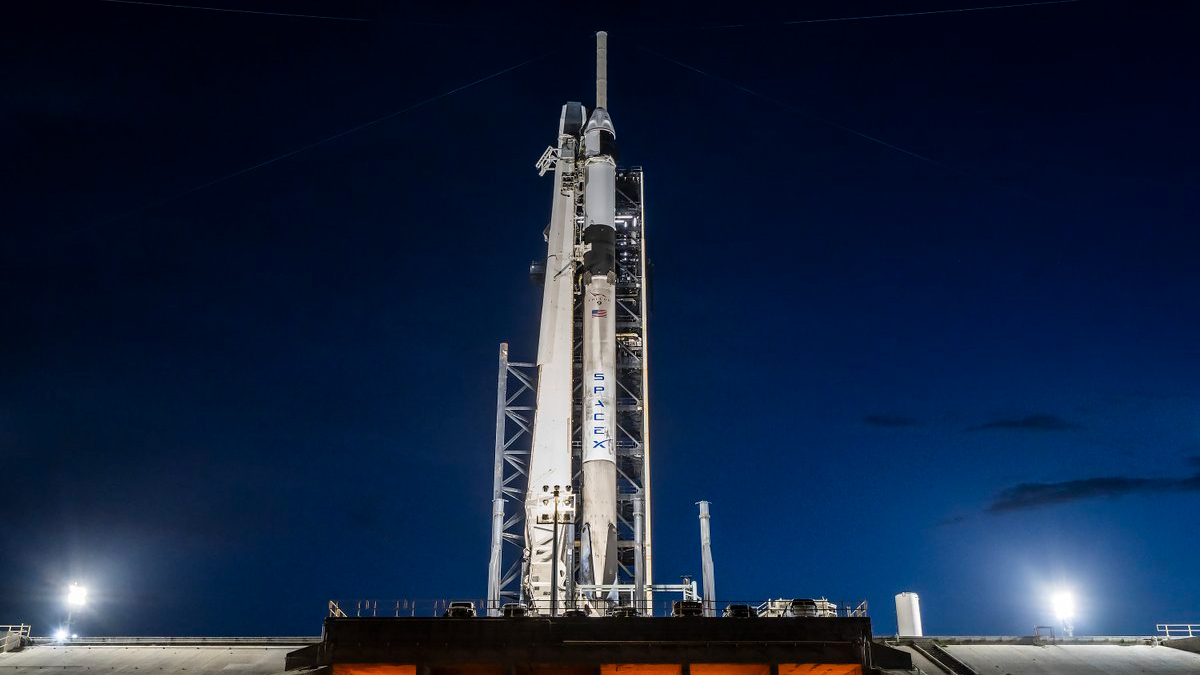Liftoff! SpaceX launches 1st astronauts for NASA on historic test flight
Orbital human spaceflight has come back to American soil.
CAPE CANAVERAL, Fla. — SpaceX launched astronauts for the first time ever today, making history and opening a new age of commercial spaceflight.
A shiny white Falcon 9 rocket lifted off from historic Pad 39A at NASA's Kennedy Space Center here today (May 30) at 3:22 p.m. EDT (1922 GMT), carrying SpaceX's Crew Dragon capsule into orbit.
The launch kicked off SpaceX's landmark Demo-2 mission, which is sending NASA astronauts Bob Behnken and Doug Hurley to the International Space Station (ISS). Demo-2 marks the return of orbital human spaceflight to U.S. soil after a nearly decade-long absence, and it signals the beginning of a new era in space exploration — one led by commercial companies.
"It was incredible," Hurley radioed SpaceX's launch control. " Appreciate all the hard work and thanks for a great ride to space."
President Donald Trump and Vice President Michael Pence were on hand to watch the launch live from the Kennedy Space Center. Trump told reporters ahead of today's launch that he felt an obligation as president to watch the historic liftoff.
Full coverage: SpaceX's historic Demo-2 astronaut launch explained
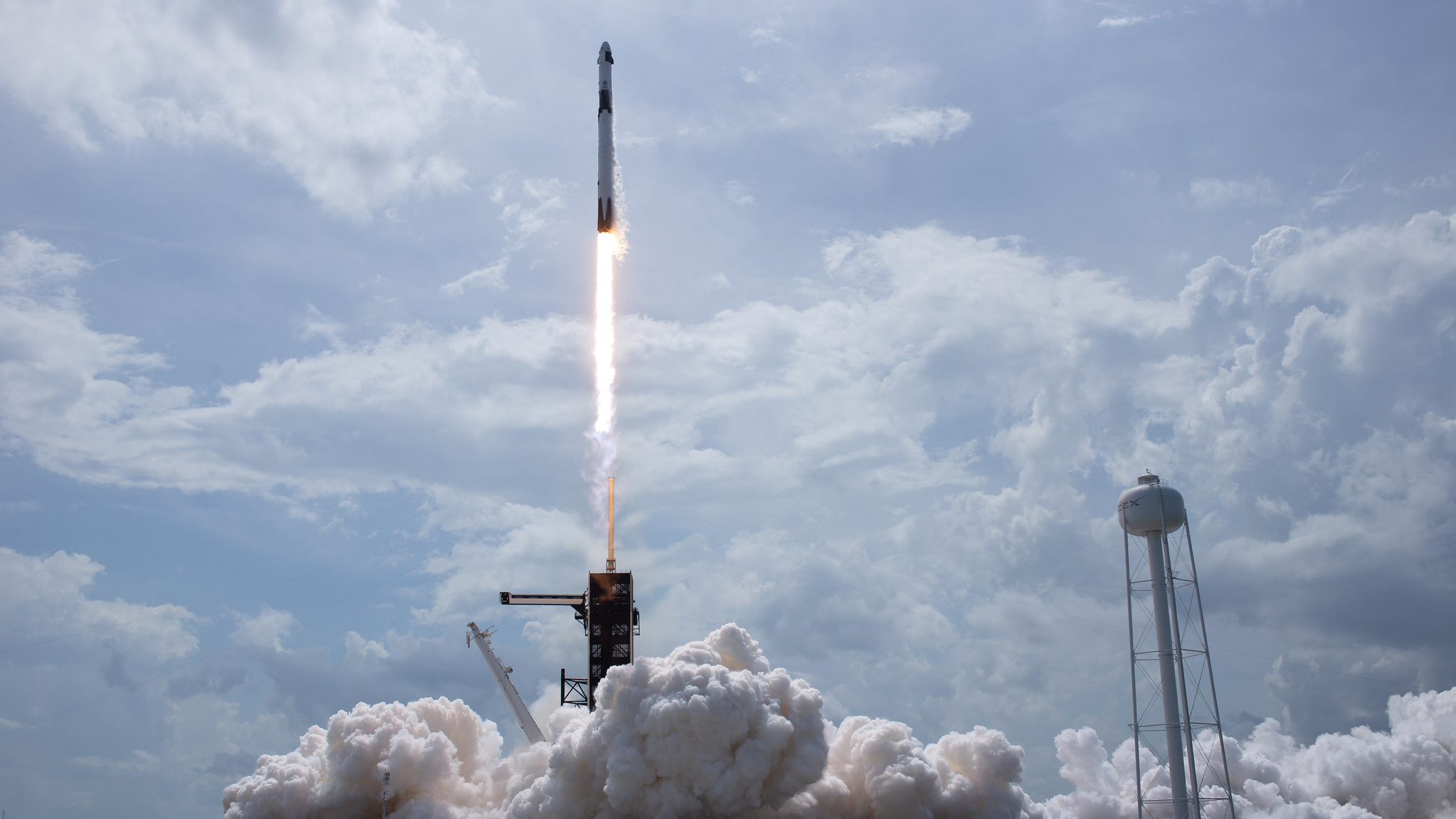
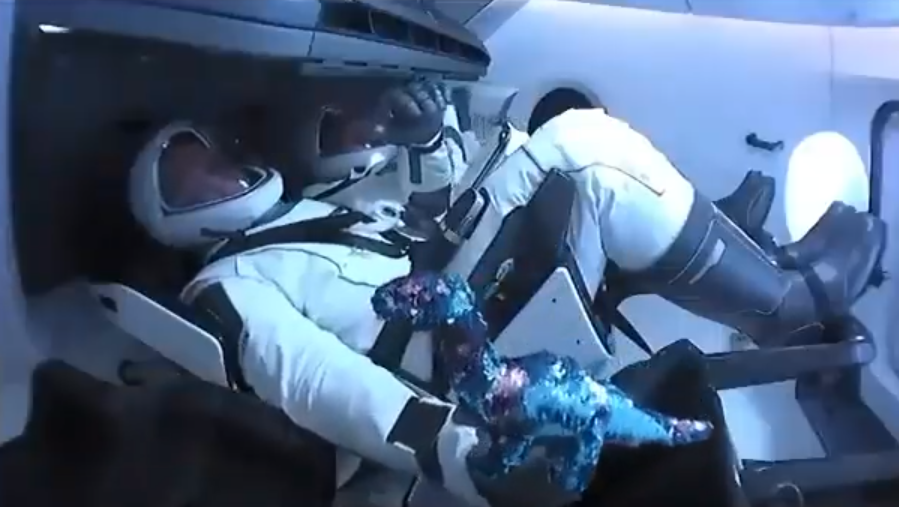
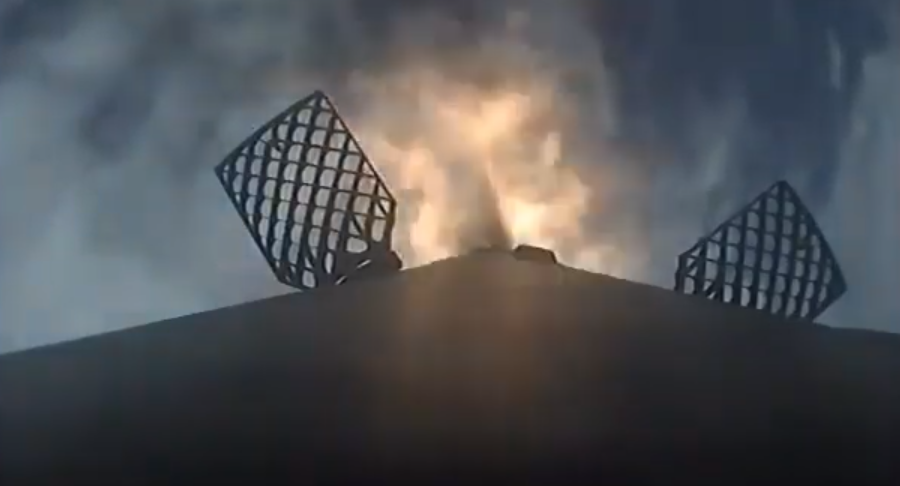
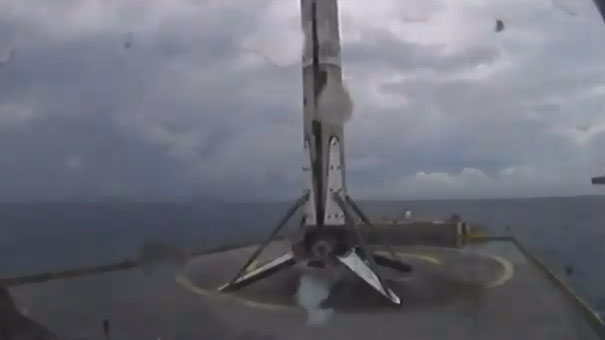
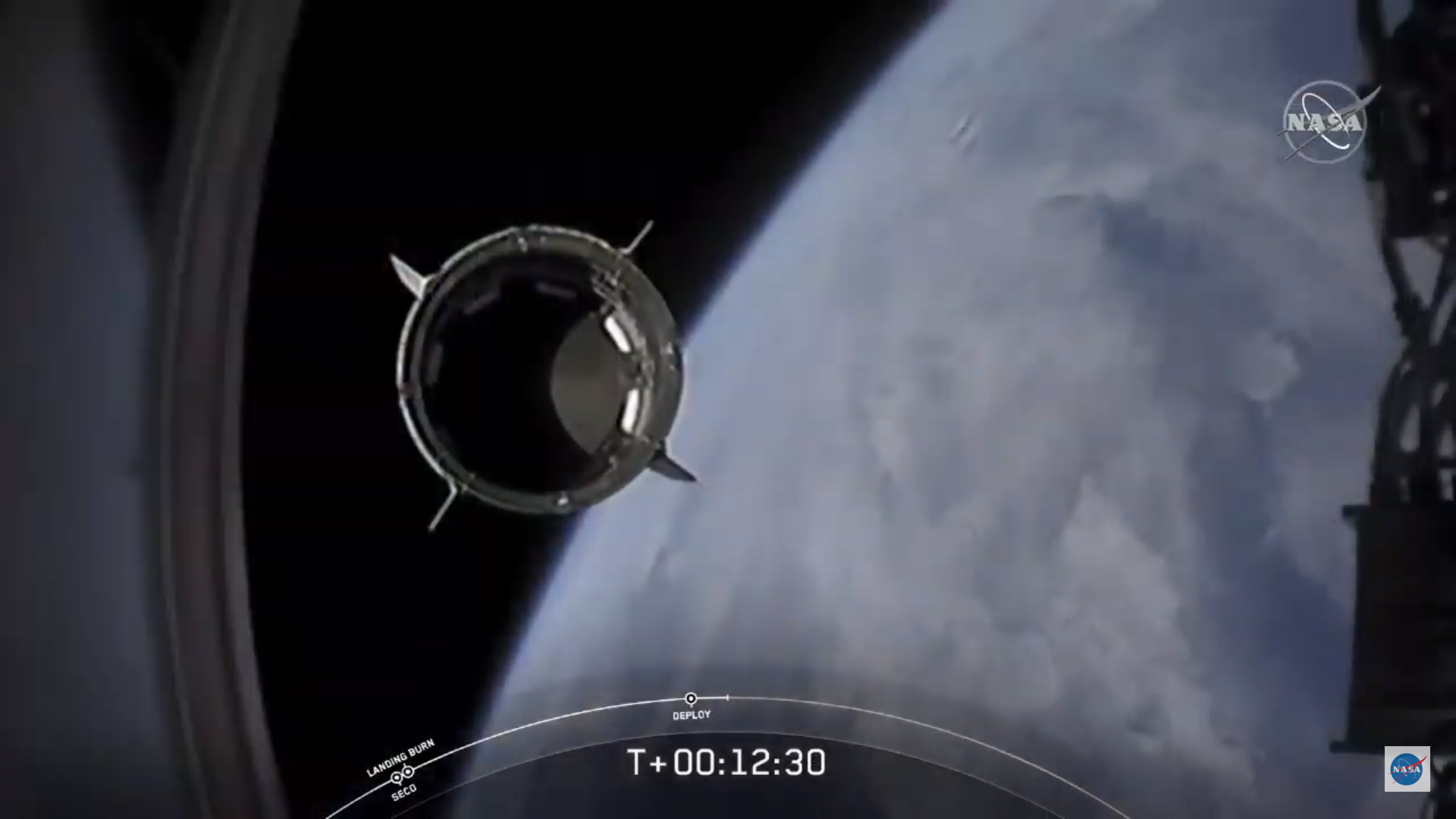
Shortly after launching the Hurley and Behnken into orbit, SpaceX also notched another rocket landing under its belt. The Falcon 9 booster's first stage made a smooth landing on SpaceX's drone ship Of Course I Still Love You in the Atlantic Ocean. U.S.
Breaking space news, the latest updates on rocket launches, skywatching events and more!
Today's launch was originally scheduled to occur on Wednesday (May 27), but bad weather forced the NASA-SpaceX team to scrub that attempt about 20 minutes before liftoff. In addition to Trump and Pence, huge crowds were expected to watch the SpaceX's first crewed launch.
While NASA cautioned space fans not to travel to the launch due to the ongoing coronavirus pandemic, the launch took place as Florida is reopening its businesses. The Kennedy Space Center Visitor's Complex, for example, reopened its doors on May 28. A day earlier, the first launch attempt drew an estimated 150,000 spectators to Florida's Space Coasts.
A 10-year journey to the launch pad
On July 21, 2011, the space shuttle Atlantis touched down for the final time, ending the storied 30-year career of NASA's shuttle fleet. The winged orbiters were NASA's workhorses for decades. First flying in 1981, and continuing service until 2011, the space shuttle helped build the ISS and launch key satellites such as the Hubble Space Telescope.
In 2010, NASA took a big step toward the post-shuttle future. The agency decided to rely on private companies to ferry crewmembers to and from Earth orbit and began awarding contracts to encourage the development of private astronaut taxis.
In 2014, SpaceX and Boeing emerged as the winners of this commercial crew competition, scoring contracts worth a combined $6.8 billion to finish work on their spacecraft and fly six operational crewed missions apiece to the ISS. Once operational, their vehicles — SpaceX's Crew Dragon and Boeing's CST-100 Starliner — will be NASA's primary means of transporting astronauts to Earth orbit.
Related: How SpaceX's Crew Dragon Demo-2 mission will work in 13 steps
Ever since the final shuttle flight touched down, every astronaut bound for the orbital outpost has hitched a ride on a Russian Soyuz spacecraft. Now, the nearly nine-year hiatus is coming to a close.
Demo-2 is the final test before NASA can fully validate Crew Dragon and the Falcon 9 for human spaceflight. Once that happens, SpaceX can start flying astronauts to and from the space station on a regular basis.
The mission's departure point is significant and appropriate. Pad 39A is the site from which the Apollo 11 astronauts launched to the moon in 1969, and it also hosted 82 of the 135 space shuttle launches, including the first and final ones.
Related: Here's every spaceship that's ever carried an astronaut into orbit
Demo-2 in detail
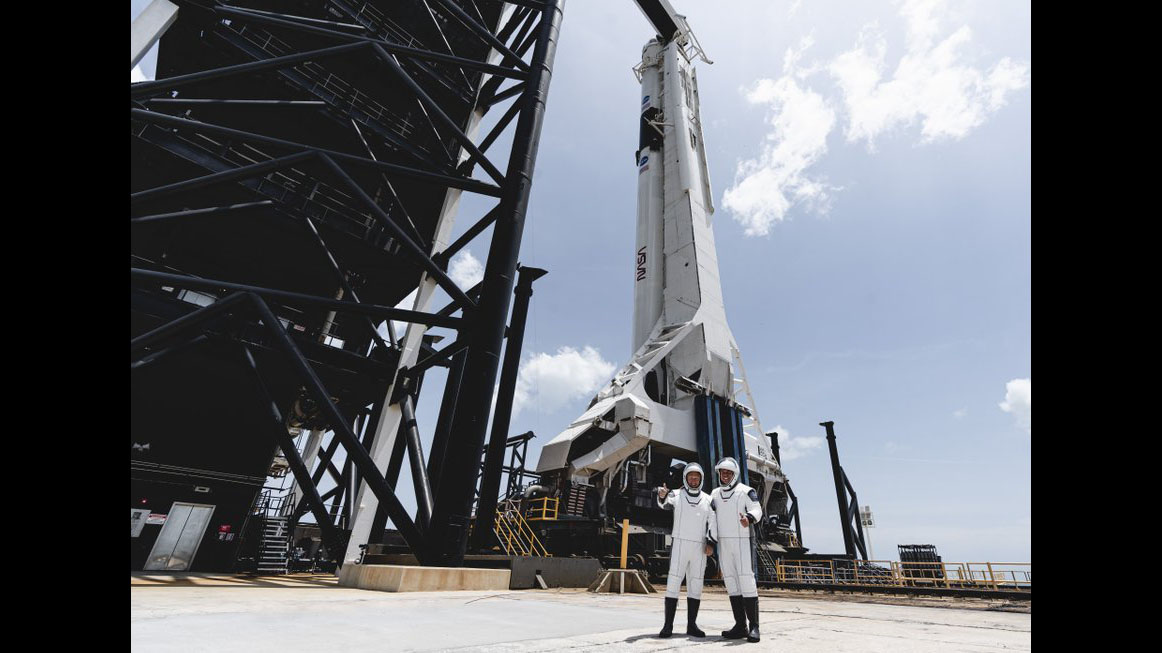
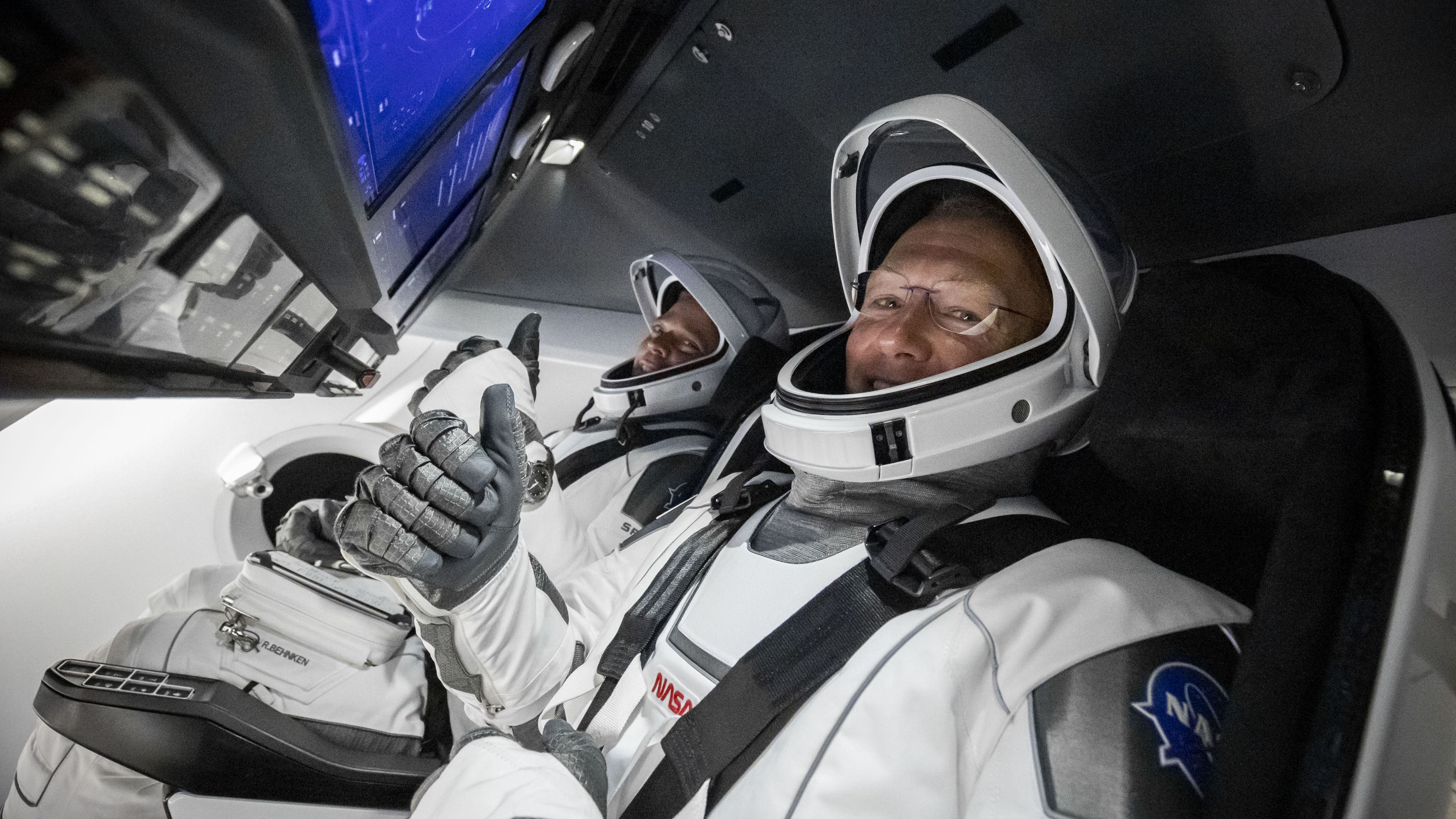
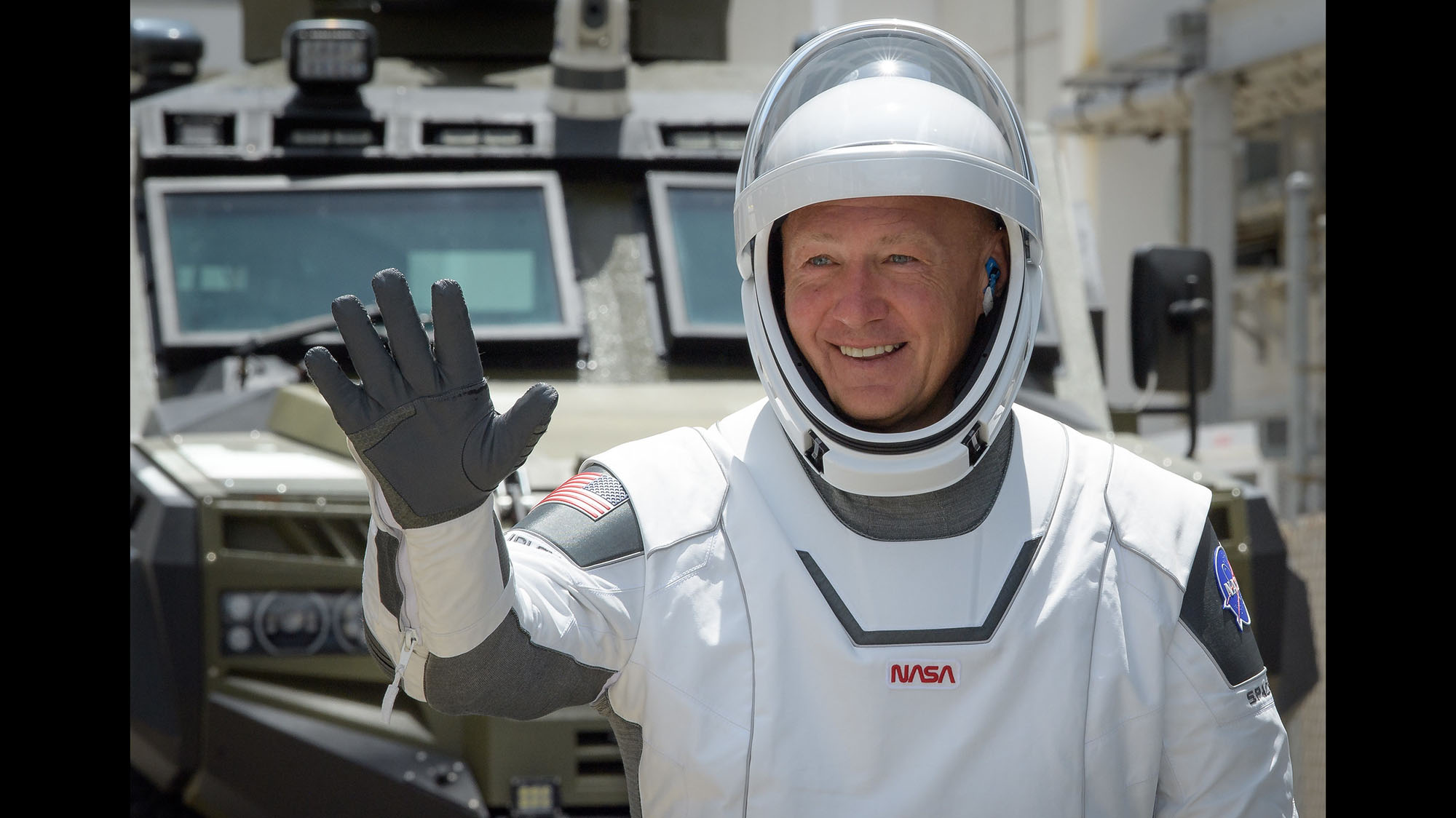
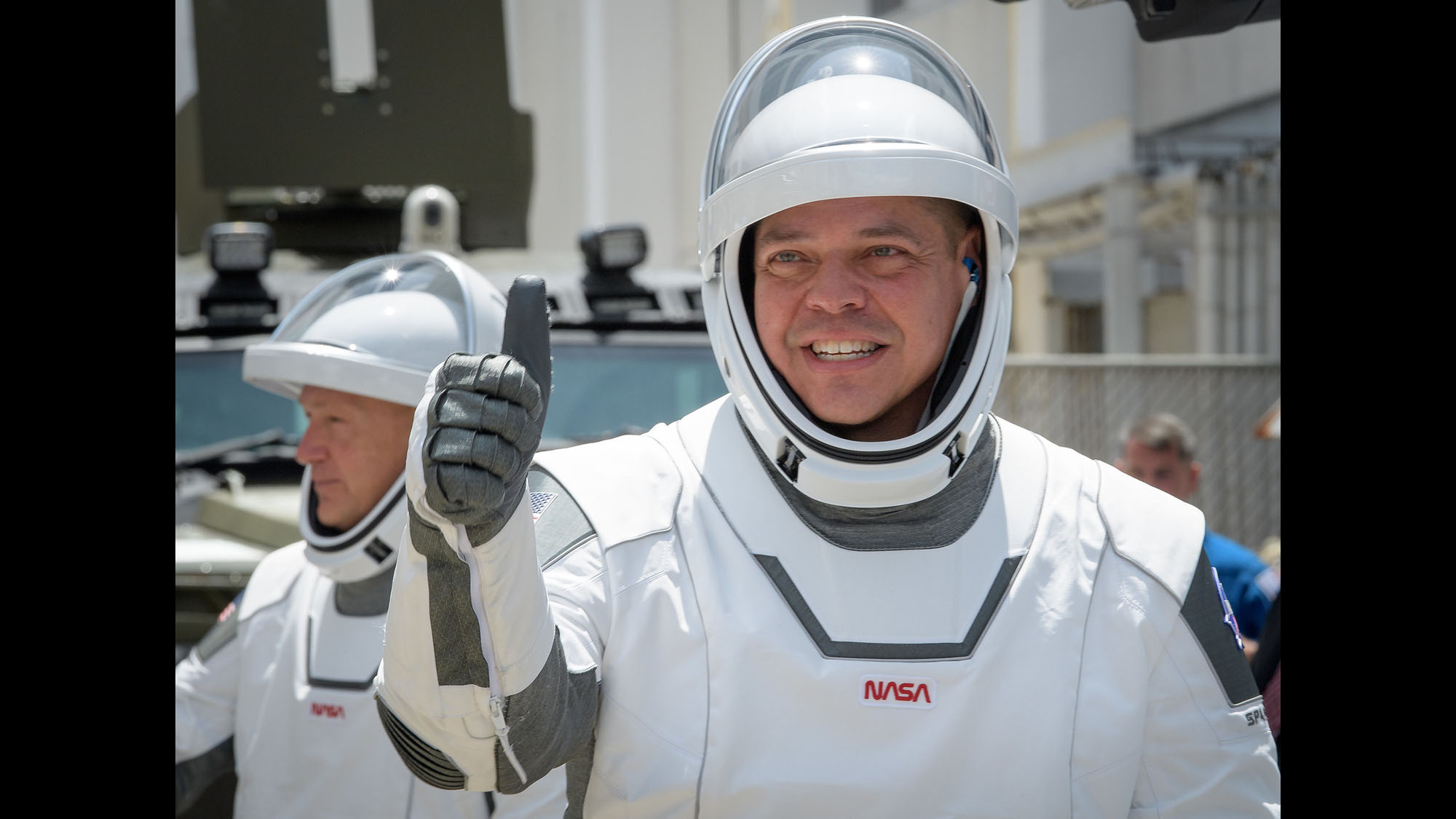
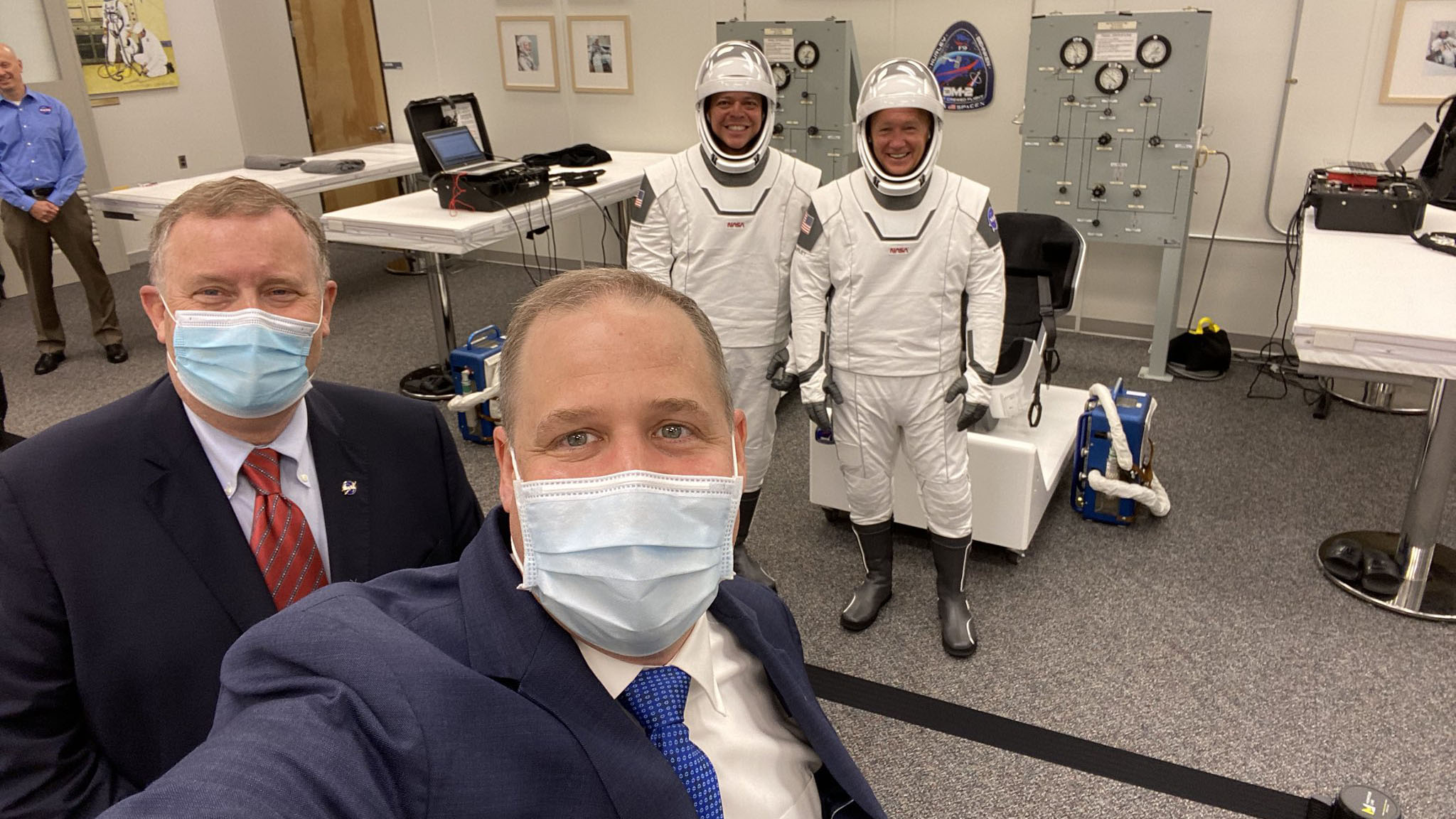
Behnken and Hurley traveled to the pad approximately 3 hours before launch today. They made the trip in style, riding in a white Tesla Model X that was decked out in the old NASA "worm" logo that was revived for the launch. (SpaceX founder and CEO Elon Musk also runs Tesla.)
Upon arrival at the launch pad, the astronauts took an elevator to the crew access arm, which stands approximately 265 feet (81 meters) above the ground. They then climbed into the capsule.
After a series of system checkouts, Behnken and Hurley armed Crew Dragon's abort system, a crucial safety component.
One of the difficult lessons learned from the loss of the space shuttle Challenger in 1986 was that all future crewed vehicles should be equipped with emergency escape systems, which the shuttle did not have.
While in-flight anomalies are rare, NASA needed to ensure that, if one of SpaceX's Falcon 9 rockets were to suffer a problem, its astronauts would still be brought home safely. As such, SpaceX demonstrated the system during a crucial flight test in January of this year, which intentionally destroyed a Falcon 9 rocket.
Related: SpaceX's Crew Dragon space capsule explained (infographic)
SpaceX began fueling Demo-2's Falcon 9 with supercooled liquid oxygen and kerosene 45 minutes before liftoff today. Then the countdown clock hit zero, and Crew Dragon was on its way to the ISS for the second time ever. (The first visit came in March 2019, during an uncrewed test flight called Demo-1.)
It will take Behnken and Hurley about 19 hours to catch up with the space station. During that time, the astronauts will test out Crew Dragon's onboard systems, collecting data so NASA can certify the spacecraft to carry humans. The vehicle is fully autonomous, so it's designed to fly without any human intervention. However, it has a complete control panel that the astronauts will use to test out the manual control mode.
Hurley piloted the final space shuttle mission, known as STS-135, and he will pilot Crew Dragon on orbit during Demo-2. When asked about the capsule's control panel in a prelaunch briefing, Hurley compared the system to those on modern-day aircraft. Pilots do more monitoring than flying on today's planes, and the same is true with Crew Dragon, Hurley explained.
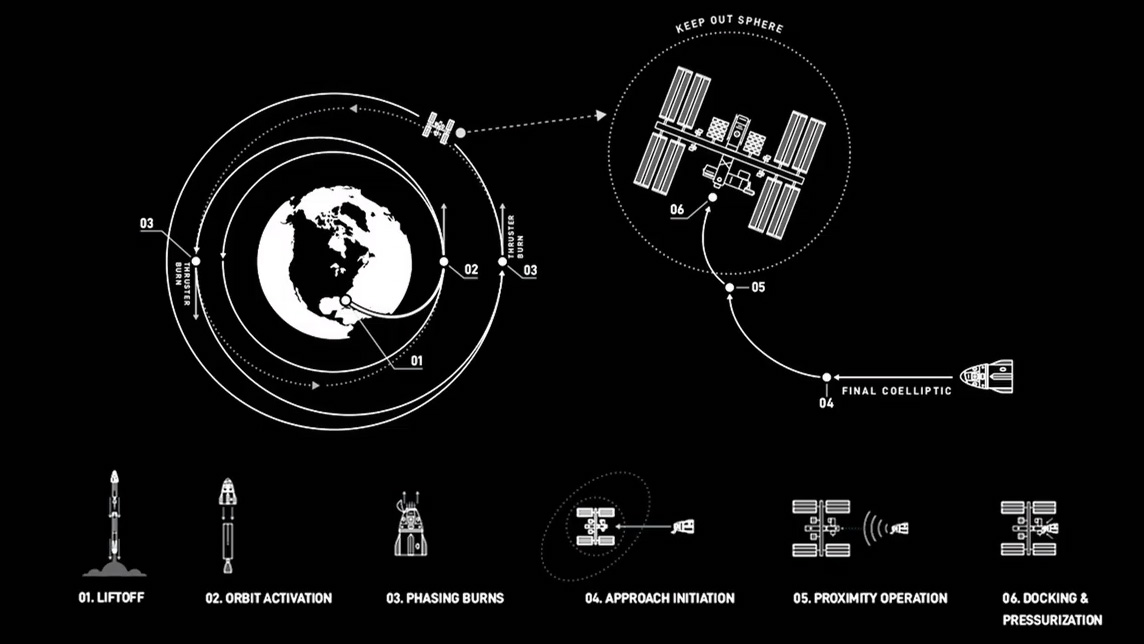
Hurley will be able to retrieve a small American flag that he and his STS-135 crewmates left aboard the station. It was left with the intention that the next crew to launch from the U.S. would retrieve it and bring it home.
Leading up to today's launch, SpaceX was working no major issues and passed two critical launch readiness reviews with flying colors. The only main concern was weather, as NASA had a long list of weather criteria that must be met, including calm seas downrange from the launch pad. That's so teams could recover the capsule in the unlikely event of an abort.
But, unlike Wednesday, Mother Nature ended up cooperating today.
Behnken and Hurley are expected to arrive at the space station tomorrow (May 31) at 10:29 a.m. EDT (1429 GMT). They will dock at the station's Harmony module and will remain parked there for one to four months.
The length of stay is dependent upon several factors, including the craft's solar panels as well as the timing of the next crewed mission. Crew Dragon's first operational mission, Crew-1, should be ready to launch at the end of August, NASA Administrator Jim Bridenstine estimated during a prelaunch news conference.
Crew-1 will carry three NASA astronauts — Victor Glover, Mike Hopkins and Shannon Walker — as well as Japanese astronaut Soichi Noguchi.
- SpaceX's Crew Dragon Demo-1 test flight in pictures
- Watch how SpaceX's Crew Dragon will launch astronauts into space in this new video
- Meet the NASA astronauts launching on SpaceX's historic Crew Dragon test flight
Follow Amy Thompson on Twitter @astrogingersnap. Follow us on Twitter @Spacedotcom or Facebook.
OFFER: Save 45% on 'All About Space' 'How it Works' and 'All About History'!
For a limited time, you can take out a digital subscription to any of our best-selling science magazines for just $2.38 per month, or 45% off the standard price for the first three months.
Join our Space Forums to keep talking space on the latest missions, night sky and more! And if you have a news tip, correction or comment, let us know at: community@space.com.

Amy Thompson is a Florida-based space and science journalist, who joined Space.com as a contributing writer in 2015. She's passionate about all things space and is a huge science and science-fiction geek. Star Wars is her favorite fandom, with that sassy little droid, R2D2 being her favorite. She studied science at the University of Florida, earning a degree in microbiology. Her work has also been published in Newsweek, VICE, Smithsonian, and many more. Now she chases rockets, writing about launches, commercial space, space station science, and everything in between.

